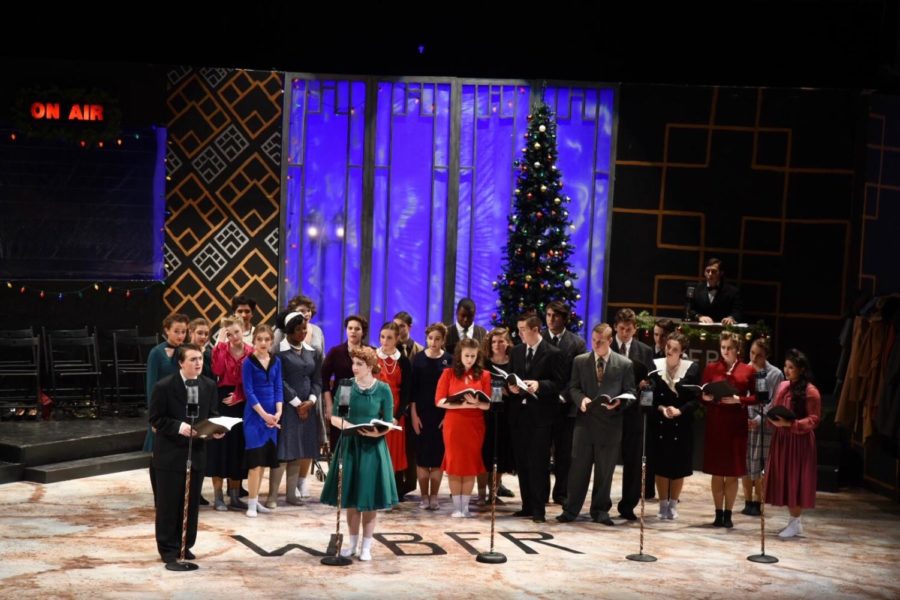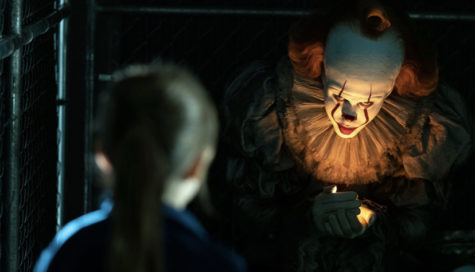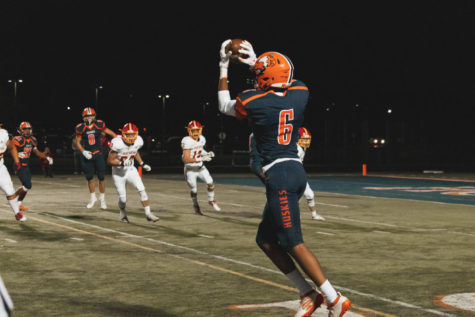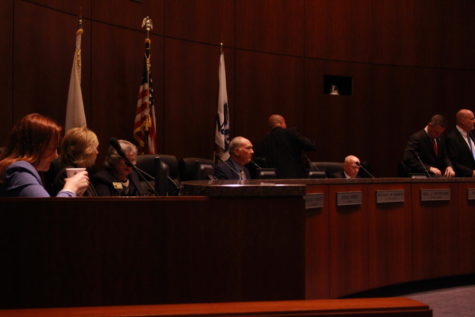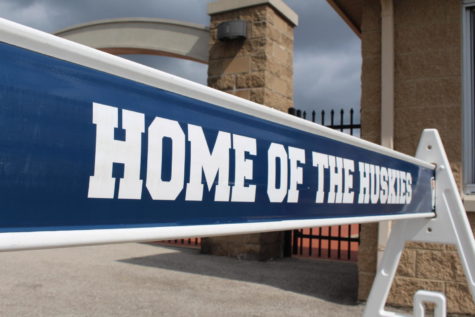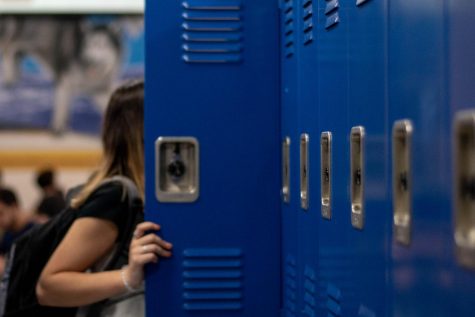“It’s a Wonderful Life” radio show a perfect, creative blend of audio and visual
Photo by Juliet Falanco
It’s December 24, 1946 in Studio A at WBFR Radio, and a cast of 21 actors is preparing to present “It’s a Wonderful Life” live to the listening audience of Naperville North High School. It’s easy for the audience to feel like they are living the life of George Bailey as the radio play brings their voices to life in this winter tale.The production put on by the school was a success in terms that it was was a radio play with strong character voices, realistic sounds, costume designs, and a well-crafted radio set.
With the help of only sound effect artists called “foley artists,” the ensemble re-enacts the story of George Bailey (Nathan Warwick), a young man whose dreams of traveling the world are thwarted by his sense of responsibility to the family business. Bailey, compassionate yet disheartened, is nearly at his end. He questions his purpose in life and considers ending it all. Just then, an angel (Charlie Kennedy) arrives to show Bailey how the lives of those he loves would be affected if he were not around. The story’s message is profound and remains relevant for today’s audiences. This movie classic is turned not into a play, but into a radio show.
The Naperville North’s production of “It’s a Wonderful Life: A Radio Play,” directed by NNHS acting teacher Andrew Simon, is a euphonious experience complete with a fabricated set made by North’s tech crew. Audience members of all ages watched and enjoyed the show in the NNHS auditorium on Dec. 1-3.
Simon gave the difference between a radio show and a typical play performed at the school.
“The biggest difference is just that there’s no staging. The actors are playing actors who are playing the characters, which is a hard concept for people to get… but once they get into it, it really becomes the characters who people know and love. They’re just in front of mics talking to each other using their voices more than anything” Simon said.
The voices were a key element being that the show is made for radio, and I thought they nailed this very nicely. Every actor gave their own signature voice for each character, some even having to come up with voices for multiple characters throughout the show. Even though there is something physical to watch, I still was able to hear the emotion from the actors at the mics and the foley sound artists making their creative sounds as if things were happening on stage. I will say, though, there were mic malfunctions here and there, but professionalism was kept as the actors stayed with their lines and projected their voices so even those sitting in the back could still hear.
With a storyline set in the 1940’s, the costume crew researched and dressed the actors in pieces identical to those in that time period. The actresses were styled as businesswomen working in the studio with their pinned up hairstyles and knee length dresses, while the men were dressed head to toe in professional attire. Being that they were to be recording for the radio, the actors didn’t wear shoes so that there wouldn’t be foot noise heard through the mics.
Even though the plot of the play was meant to be heard, the production didn’t lack in the physical aspect of the show and everyone was styled perfectly for the time period.
The cast was able to bring the Christmas spirit by adding in caroling, an encounter with Santa, and a sprinkle of snow at the end of the performance to solidify that it is now time for holiday season. These little details throughout the show really brought out that Holiday cheer and were a smart decision to set the tone.
Senior Annie Sassen, who played the role of Josephine (originally known as Joseph), hoped the audience could take a piece of the show with them as they leave the auditorium.
“I just want everyone to go home with a warm feeling, that Christmas feeling of spirit and joy and love,” Sassen said. “I want people to take away that they’re special and important.”

